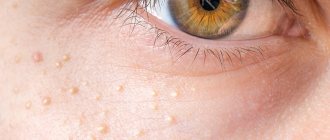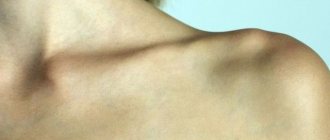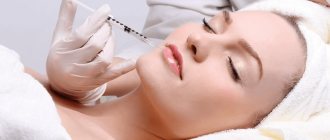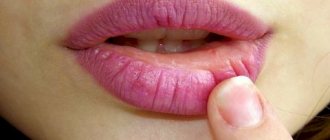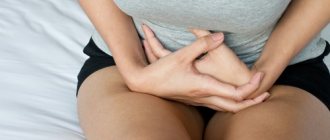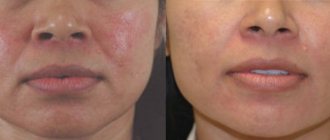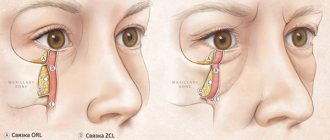According to statistics, 96% of men and 79% of women face the problem of severe hair loss over time. It is common for a person to lose up to 100 hairs every day, while the loss of a large amount of hair is already a pathology and leads to baldness.
Baldness is caused by changes in immune status, endocrine diseases, functional disorders of the nervous system, foci of chronic infection, genetic factors, changes in the rheological properties of blood, disorders of the peripheral vascular system and cerebral vessels, imbalance of microelements, etc.
Hair is considered an adornment and a source of pride for a person. Today, male pattern baldness is a problem, but it is not as catastrophic as for women. There are many reasons for hair loss; consider a disease such as alopecia.
Alopecia is a disease that characterizes itself as sudden hair loss to varying degrees.
Depending on the severity, the following types of alopecia are distinguished:
focal – hair loss on the head in separate areas; total – loss of all hair on the head; universal – hair loss on the head and body.
Alopecia is divided into two groups:
- with less than 50% hair loss;
- with loss of more than 50% of hair.
Alopecia equally affects both men and women, but the first group more often develops in childhood and often in children against the background of atopy.
In 80% of patients, the disease occurs in the form of a single episode with subsequent restoration of hair growth; in 20%, the disease is recurrent in nature and can lead to permanent baldness.
Causes of autoimmune alopecia
Trichologists believe that autoimmune alopecia can occur against the background of diseases.
- Toxic diffuse goiter. Most often it occurs in women. Symptoms include sudden weight loss, hyperhidrosis, bulging eyes, and tachycardia.
- Lupus erythematosus. The disease is also more common in women. It's hard to bear. Lupus appears as a rash that covers the body and scalp.
- Diabetes. The disease occurs in both men and women. It leads to the death of cells that form the endocrine part of the pancreas. Symptoms include thirst, weight loss or gain, and blurred vision.
- Chronic thyroiditis. A disease that leads to damage to the thyroid tissue. Symptoms may include fatigue, a constant feeling of weakness, and hair loss.
- Rheumatoid arthritis. The disease most often occurs in women 35–40 years old. It progresses rapidly, affecting the joints.
Other factors that can lead to autoimmune baldness include:
- long-term depression, severe stress;
- increased iodine content in the body;
- chronic respiratory diseases;
- carious disease;
- lack of vitamins and minerals;
- recent injuries;
- bad environment, work in chemical production.
If a person has problems with immunity, then autoimmune pathologies can manifest themselves throughout life. Destruction of hair follicles is sometimes accompanied by lesions of the nail plates.
To identify the main cause of the disease, consultation with doctors and a thorough diagnosis are needed.
Diagnostics
Individual selection of treatment based on data obtained during a trichogram makes it possible to select and carry out effective treatment!
THE INSTITUTE OF ALLERGOLOGY AND CLINICAL IMMUNOLOGY has a fundamental base that allows it to carry out the entire range of diagnostic and therapeutic measures.
A dermatovenerologist usually makes a diagnosis based on a characteristic clinical picture. If necessary, a comprehensive examination of the patient is carried out, and related specialists and experienced doctors can provide you with advice.
- Gastroenterologist
- Gynecologist
- Endocrinologist
- Neurologist
Diagnostic measures are aimed at identifying the cause of the disease:
- Blood chemistry.
- Clinical blood test, clinical urine test.
- Hormonal profile.
- Carrying out a trichogram.
- Microscopic examination of skin and hair for the presence of pathogenic fungi
- Serological tests to exclude systemic diseases (lupus erythematosus, syphilis, etc.)
Trichoscopy
allows the doctor and patient to see the condition of the scalp on the monitor screen, determine the density of hair growth in problem areas and compare them with healthy areas. You can also evaluate the activity of hair replacement by the number of young hairs, determine the degree of hair thinning, and the preservation of its structure. All this allows the trichologist to select the right treatment and make a prognosis for the future, both about the further dynamics of the pathological process and about the effectiveness of treatment.
Symptoms of autoimmune alopecia
Hair loss is often accompanied by the following symptoms:
- tachycardia;
- irregular menstruation;
- hyperhidrosis;
- dyspnea;
- high blood pressure;
- sudden mood swings;
- disruption of the gastrointestinal tract systems;
- brittle nails.
With autoimmune alopecia, hair loss occurs in patches. If the disease is not treated promptly, you can lose more than 25% of your hair. You should consult a doctor if any of the above symptoms appear.
What is prohibited in case of baldness
You have learned how to treat and fight hair loss in men, now let’s look at what you should never do. It is necessary to protect yourself from the effects of the adverse factors listed at the very beginning. Normalize your diet, make it balanced, eat at the same time.
Normalize the functioning of the immune system and the synthesis of hormones. It is also necessary to minimize workload and stress levels. It is also not recommended to: ● Overwork and work too hard. ● Stick to strict diets. ● Leaving a warm room in the cold - sudden temperature changes can trigger a pathological process. A hat will help smooth out the effects of hypothermia. ● Comb your hair harshly, using a towel now, after a shower. Such mechanical damage has a negative impact on the condition of the curls.
Stages of alopecia
Autoimmune alopecia goes through three stages:
- Progressive. Hair falls out quickly, lesions appear that enlarge and merge.
- Stationary. The lesions do not change their size.
- Regressive. In areas of baldness, fuzz appears, which is eventually replaced by normal hair.
In complex forms, the disease becomes resistant to treatment, which leads to irreversible consequences.
Individual stages may not be observed if the disease occurs in an acute form. The likelihood of losing all your hair is high.
Treatment
Treatment of autoimmune alopecia is carried out using traditional methods. The choice of specific methods depends on a number of factors:
- primary source disease;
- stage of the disease;
- patient's age;
- individual contraindications.
There are two main treatment regimens. They differ in that they are used for different severity of alopecia. The first scheme is suitable if less than 50% of the hair on your head is lost. The second - if more than 50%.
When less than half of the hair has fallen out, for the treatment of autoimmune alopecia the patient may be prescribed:
- multivitamin complexes, necessarily containing B vitamins;
- medicines containing zinc;
- minoxidil (an effective remedy against hair loss);
- corticosteroids (used both intradermal injections and locally on areas of baldness).
The second treatment regimen, when more than 50% of hair is lost, involves the use of the following medications:
- corticosteroids;
- cytostatics;
- irritating substances, allergens applied to areas of baldness.
There are also salon and physiotherapeutic procedures indicated for autoimmune alopecia.
- Magnetic, laser or electromagnetic resonance therapy. The EMRI procedure can suppress the pathogen, and magnetic and laser therapy can restore the functionality of the thyroid gland.
- Plasma therapy. The method helps stimulate hair growth and involves injecting plasma into areas of baldness.
- Mesotherapy. It involves the injection of vitamins or other nutrients into the skin, which helps strengthen hair follicles and hair regeneration.
The recovery period after autoimmune alopecia is long. Hair transplantation helps to avoid psychological discomfort and hide aesthetic problems. However, with autoimmune alopecia it is almost impossible.
During the treatment period, it is extremely important to monitor proper nutrition. It is recommended to exclude fried, fatty, and floury foods from the diet. You need to eat more fermented milk and dairy products, seasonal fruits and vegetables. Experts also recommend jelly-like dishes made from fruits or berries, jellied meat, and fish aspic, since these products are rich in collagen.
In the fight against autoimmune alopecia and for the body as a whole, daily walks in the fresh air and adherence to a sleep schedule are beneficial.
In the treatment of autoimmune alopecia, the psycho-emotional component plays an important role. Sometimes the patient is referred to a consultation with a psychologist to talk through the problem of hair loss, reassure him and set him up for a positive result. It is important to consider comorbid psychological conditions and psychiatric illnesses.
Types of male pattern baldness
Depending on the symptoms and manifestations, alopecia is divided into certain types.
Androgenetic
It occurs more often than others - in 90% of all cases. It is characterized by the fact that the hair becomes thinner only on the head, but the eyebrows, beard and eyelashes remain unchanged. In some cases, separate areas appear where hair growth, on the contrary, increases. The optimal treatment is mesotherapy. It occurs in 6 stages: 1. Thinning begins from the frontal part; 2. Then a receding hairline forms, resembling a triangle; 3. Areas without hairs become deeper and more noticeable, foci of hair loss begin to form on the crown of the head; 4. A rounded area appears where the fluff grows, and at the same time the affected areas increase; 5. The area of the crown and forehead gradually connects, only small areas with hair remain; 6. Complete loss of vegetation.
Varieties of this type of alopecia. There are: ● horseshoe - baldness begins from the forehead; ● nest - areas are formed without any order, after which a horseshoe-shaped bald patch gradually develops; ● mixed look.
Telogen effluvium
In this case, the curls do not receive proper nutrition, as a result they become brittle and lifeless. They fall out even with minimal touches and mechanical damage. Disturbances in telogen production can be caused by insufficient sunlight, general weakening of the body as a result of illness or taking potent drugs, hereditary or congenital pathologies. The disease can develop gradually or occur instantly.
Gnezdovoy
Here the hair roots are damaged, resulting in the formation of rounded bald patches on the head. In some cases, old areas are gradually overgrown and new ones appear in their place. This type is treated with the use of immunosuppressants, which block the action of body cells that destroy follicles. This type most often affects dark hair, which contains a high level of pigment.
Total
The final stage of alopecia. As the disease progresses, a man experiences complete hair loss not only on his head, but throughout his entire body. The process can last from a couple of months to several years, along with it the nails deteriorate and are destroyed. With this development of events, only a transplant can correct the situation.
Diffuse
Appears after exposure to certain factors, for example, prolonged stress, a course of antibiotics, or receiving a dose of ionizing radiation. It does not exist independently, separately from other types; most often it accompanies the androgenetic type. The main characteristic is that every day a representative of the stronger sex loses up to 100–120 hairs. In order to be completely cured, it is necessary to protect yourself from unfavorable factors that could cause the development of the pathological process.
Scarred
Occurs less frequently than others. Today, only every 70-100th case can be attributed to this species. The follicles are irreversibly damaged and are gradually completely replaced by connective tissue, that is, scarring occurs. The most common cause is scalp infections. Therefore, if treatment is started in a timely manner, the hair can be saved and gradually restored. A characteristic feature is that the follicle completely atrophies and ceases to function. Transplantation is the only effective treatment.
Prevention
Unfortunately, there are no specific methods that can protect a person from autoimmune alopecia. However, doctors remind you of general recommendations for scalp and hair care.
- Use hair care products regularly. It’s good if they are made from natural ingredients.
- Always protect your hair from the elements. You need to wear a hat on cold days, a hat on hot sunny days, and also hide your head from the rain and wind.
- Contact trichologists, hairdressers, and cosmetologists in a timely manner. Prevention of dandruff and other diseases, overcoming problems that arise make hair stronger and prevent it from falling out.
- Do not use products that can cause alopecia.
What to do first when dealing with hair loss in men
It is impossible to make a diagnosis and determine its stage on your own at home. To do this, you should visit a number of specialists:
● Therapist - to prescribe general tests (blood, urine) and initial consultation; ● Trichologist - trichogram to diagnose the condition of the hair; ● Dermatologist - performing scrapings and biopsies to examine for skin infections; ● Endocrinologist - to monitor hormone levels.
You need to contact an experienced specialist. The doctor will perform the necessary set of tests to assess the current condition and develop an optimal treatment plan.
After making a diagnosis, the doctor determines the cause of the disease. Therapy will be aimed specifically at eliminating them, and not at the signs of the disease.
If hair loss is not associated with serious disorders in the body, then restorative medications can be used. An excellent solution is to use Selencin, which is sold in the form of tablets, shampoo-rinse and stimulating spray. The product has proven a high degree of effectiveness in the fight against baldness thanks to the list of advantages: 1. Allows you to stop the process of hair loss within 2 months. 2. Affects the very root cause of the condition, and not its manifestations. 3. Stimulates the growth of new strands, allowing you to restore its former density. 4. Has a restorative effect, normalizes the life cycle. 5. Performs intensive nutrition and strengthening.
In addition to it, there are many universal products on the market that are suitable for both men and women. However, to achieve maximum results, the doctor prescribes a course of treatment depending on your condition. Often alopecia is a symptom of an underlying disease, which can be cured to eliminate receding hairline.
Disease prognosis
If treatment is not started in a timely manner, unpleasant consequences are guaranteed:
- hair loss will spread to other areas of the head;
- the chance of restoring hair thickness with total alopecia is no more than 10%.
The course of the disease is not always predictable. Many patients recover within the first year of therapy, and sometimes without treatment. Relapses are possible in some patients.
The following factors influence forecasting:
- distribution of alopecia (focal, total, diffuse);
- type of ophiasis (nest of baldness);
- the presence of follicular atrophy;
- duration of the hair loss process;
- family history;
- presence of autoimmune diseases;
- presence of symptoms on the nails.
Without timely treatment, autoimmune alopecia causes complications in the form of mental disorders, self-esteem problems and other psychologically negative conditions.
Hair is an indicator of health. If they fall out, this indicates a hidden disease. The first symptoms indicating alopecia should not go unnoticed.
Classification
| By degree of thinning: | Due to the occurrence: |
|
|
The institute provides treatment for patients with hair loss and thinning of the scalp! The sooner treatment is started, the greater the chance of restoring the previous hair thickness!
